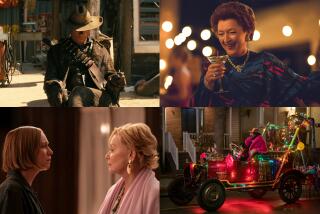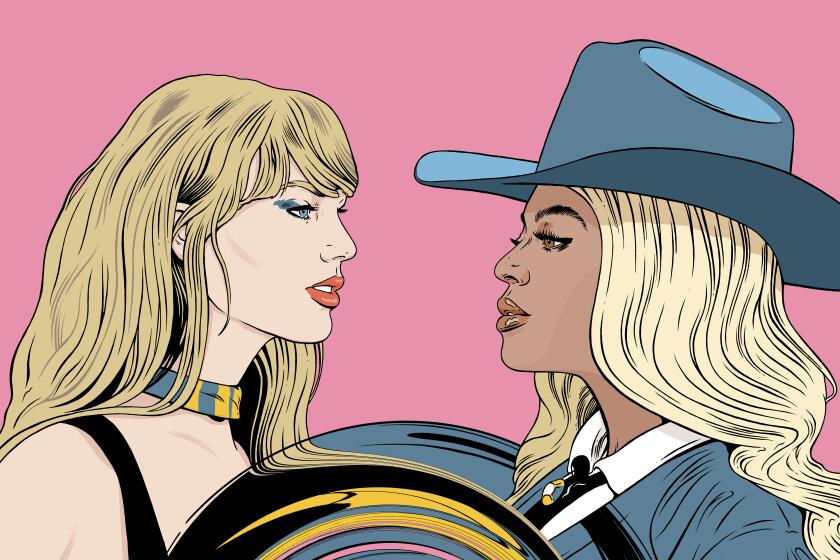There’s a moment in most great performances that tears your heart out — here are 10

Of course, it takes a fully realized performance to win an Academy Award, but sometimes it takes just a single scene to win the heart of an audience member — or an Oscar voter. But which scene is that “key” one — the prize-winning moment? Here, the 10 directors and producers behind this year’s lead actor and actress nominees offer up the scenes where their leads rose to the challenge — and showed off truly award-worthy acting chops.
Sally Hawkins, “The Shape of Water”

Having learned that the life of the sea creature she loves is in danger, mute Elisa (Sally Hawkins) demands that her neighbor and best friend, Giles (Richard Jenkins), help her save him.
Key scene: Having learned that the life of the sea creature she loves is in danger, mute Elisa (Hawkins) demands that her neighbor and best friend Giles (Richard Jenkins) help her to save him.
What makes it great: “Everything Sally does in the movie is so critical; she has to do it all with her eyes and movement,” says producer J. Miles Dale. “She’s saying, ‘My whole life people have seen me for what I lack; he sees me for what I am.’ She’s so emphatic, and smacking her hands, and she just jumps off the screen in this scene.”
Frances McDormand, “Three Billboards Outside Ebbing, Missouri”

Frances McDormand and Woody Harrelson in a key scene from ”Three Billboards Outside Ebbing, Missouri.” Warning: This video contains graphic language.
Key scene: An interrogation of Mildred (Frances McDormand) by police chief Willoughby (Woody Harrelson) begins as adversarial, then “spins on a dime,” says director Martin McDonagh, and becomes a scene about “mortality, humanity and connection.”
What makes it great: “Frances begins the scene … with a take-no-prisoners wit and an integrity that will not be broken, but after the sudden reveal all that toughness is dispelled via a simple lingering look of compassion in her eyes, the use of the word ‘baby’ — a Fran improv — and a physical touch both of empathy and a sense of her own fear,” says McDonagh.
Margot Robbie, “I, Tonya”

Margot Robbie plays troubled figure skater Tonya Harding in a key scene from “I, Tonya.”
Key scene: Tonya (Robbie) is alone in her dressing room, about to compete at the Olympics, trying to rally her strength to compete in front of the world.
What makes it great: “It’s one of the rare times we see Tonya vulnerable in the film,” says director Craig Gillespie. “There is no dialogue. Every emotion Margot conveys is through her expressions. The exhaustion, the loneliness, the defiance dance across her face. She is at rock bottom yet refuses to give up. Margot draws the audience in and demands you view her as a human being. It’s honest, raw and unapologetic.”
Saoirse Ronan, “Lady Bird”

Saoirse Ronan and Laurie Metcalf star in a clip from “Lady Bird.”
Key scene: After Lady Bird’s (Ronan) mother learns she has secretly applied for out-of-state colleges and been wait-listed, she angrily washes dishes as Lady Bird pleads with her not to be mad.
What makes it great: “One of the things Saoirse does so brilliantly is — it’s almost a magic trick — you feel like the things coming out of her mouth are just coming to her as she says them,” says producer Eli Bush. “It doesn’t feel like she’s saying lines. She has this unbelievable ability to make it so alive and real and authentic and true.”
Meryl Streep, “The Post”
Key scene: Washington Post Publisher Katharine Graham (Streep) decides to publish the Pentagon Papers under threat of legal retaliation, after much consideration and fear.
What makes it great: “She makes the decision the way people do, with great trepidation and fear, and it feels really human,” says producer Amy Pascal. “Everything is happening in Meryl’s eyes. She’s trying to decide if there’s a safe place for her to land, and she’s grappling with her whole history as a human being whether she’ll put the paper at risk or not, and finally knowing once she makes this decision her life will be forever changed.”
Timothée Chalamet, “Call Me by Your Name”

Timothée Chalamet in “Call Me By Your Name.”-----------------------Feb. 2, 2018, 2:00 p.m.For the record: This video was labeled as a deleted scene. It is not.
WATCH: Video Q&A’s from this season’s hottest contenders »
Key scene: In the film’s final single-take, dialogue-free scene, Elio (Chalamet) relives the heartbreak of several months earlier after learning his summer lover is getting married.
What makes it great: “Without any words, he goes through sorrow, mourning and hope in his face,” says director Luca Guadagnino. “He is able to encompass a maelstrom of emotions that are contradictory, to let himself go and surrender in front of the camera. My actors are never asked to be ‘doing’ drama. They’re asked to be.”
Daniel Day-Lewis, “Phantom Thread”
Key scene: While sick in bed, Reynolds (Day-Lewis) has a vision of his late mother and has a one-sided conversation with her.
What makes it great: “The conversation is incredibly intimate and vulnerable for a man who has been none of these things for his whole life,” says director Paul Thomas Anderson. “I love how restrained he is, and how vulnerable; the way he uses his voice and his diction. Normally, Daniel’s great in combat situations, where there’s dialogue bouncing back and forth, and this is the exact opposite.”
Daniel Kaluuya, “Get Out”

Daniel Kaluuya and Catherine Keener in a key scene from “Get Out.”
Key scene: Chris (Kaluuya) is asked by his girlfriend’s mother to sit with her in her private study, where she then hypnotizes him against his will.
What makes it great: “I knew that him sitting in that chair could bother a lot of people; people are prone to not liking characters who walk into danger,” says writer-director Jordan Peele. “Daniel had to show this resistance to submitting to any psychoanalysis, but that’s what you do in a loved one’s family house: You endure those moments. Watching that push and pull and becoming vulnerable despite all of his will — that’s what touches me.”
Gary Oldman, “Darkest Hour”

In a fictionalized moment, Prime Minister Winston Churchill (Gary Oldman) meets with citizens on the London Underground to see if they have the stomach to go to war with Germany.
Key scene: In a fictionalized moment, Prime Minister Winston Churchill (Oldman) meets with citizens on the London Underground to see if they have the stomach to go to war with Germany.
What makes it great: “It’s a scene that relies deeply on the supporting actors to give Gary the support and response he needed,” says director Joe Wright. “It’s about Gary/Winston listening as much as speaking. He gives us the full range of Winston’s humanity, starting with humor, through doubt and into sentimental. It’s a scene that runs the gamut of emotions.”
Denzel Washington, “Roman J. Israel, Esq.”

Ousted from his 40-year job as a backroom lawyer, Roman (Denzel Washington) shows up unannounced at a civil rights coalition for an interview with Maya (Carmen Ejogo) and slowly realizes that he’s lost touch with the movement.
Key scene: Ousted from his 40-year job as a backroom lawyer, Roman (Washington) shows up at a civil rights coalition unannounced for an interview with Maya (Carmen Ejogo), slowly realizing that he’s lost touch with the movement.
What makes it great: “What’s so amazing is the honesty with which Denzel peels back the layers of this man, who has come for a job and in selling himself realizes the tragedy of his choices,” says writer-director Dan Gilroy. “He cries in it. That wasn’t scripted; Denzel arrived there utterly naturally in the moment. The scene is transporting and magical.”
More to Read
From the Oscars to the Emmys.
Get the Envelope newsletter for exclusive awards season coverage, behind-the-scenes stories from the Envelope podcast and columnist Glenn Whipp’s must-read analysis.
You may occasionally receive promotional content from the Los Angeles Times.







